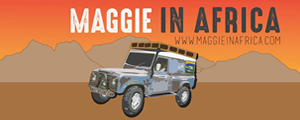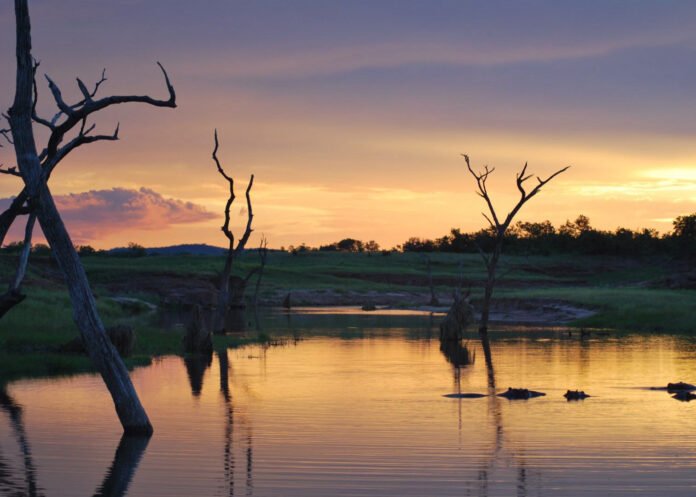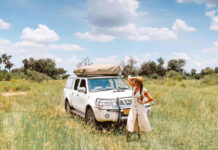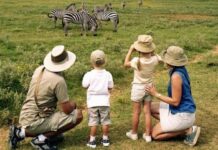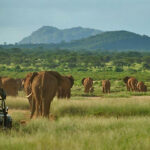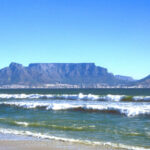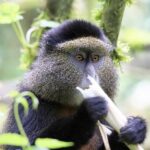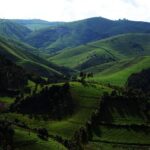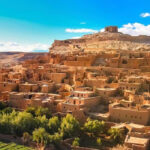After crossing the Kazungula border from Botswana, Maggie and the team headed for southern Zambia. We visited three places: Victoria Falls, Lake Kariba and the Zambezi river valley.
You can read about the route we took below, and follow on the map at the end of this post!
Victoria Falls
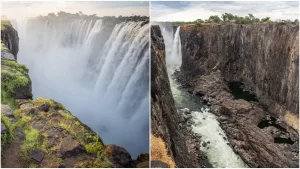
Victoria falls in the dry season (October)
Victoria falls is Zambia’s main tourist attraction, accessed by the small tourist town of Livingstone. Victoria Falls, or Mosi-oa-Tunya as it is known in the local Tonga language, is the largest waterfall in the world by height (108 metres) and width (1,708 metres) combined. The falls is part of the Zambezi river, and forms the border between Zambia and Zimbabwe.
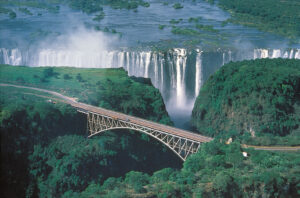
The Victoria Falls bridge between Zambia and Zimbabwe
The falls is best visited during the rainy season (November – May), when the river floods and the spray from the falls is visible for miles. Sadly, we visited in October, so the falls were very dry, but nevertheless spectacular! Without the spray, we could see very far into the gorges below…
Bathing at the top of Victoria Falls
Our favourite part of the visit was exploring the park ($20 per person entry), and its stunning views of the falls and gorges below. And, of course, dipping our feet in the river at the top of the falls – although this is technically not allowed, everyone seems to do it anyway and the officials tolerate it.
In Livingstone, there are many camping and accommodation options – we stayed in the Maramba River Lodge, a nice spot on the river just a few km away from the falls.
Lake Kariba
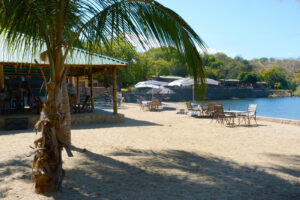
Camping near Siavonga on Lake Kariba
Our next stop was Siavonga on the beautiful Lake Kariba, the world’s largest man-made lake. Also on the border with Zambia and Zimbabwe, the lake was created by the Kariba dam on the Zambezi river.
The lake is a draw for avid fishermen, especially those seeking the fierce tigerfish – a predatory fish that lives in the lake and Zambezi river. Others also visit the lake to rent houseboats or go on boat safaris. The only thing you can’t do at Lake Kariba is swim because of the many crocodiles and hippos living in the water. We were blown away by the stunning scenery, spending lazy days reading on the lake shore at the stunning Eagle’s Rest Resort.
Zambezi river valley
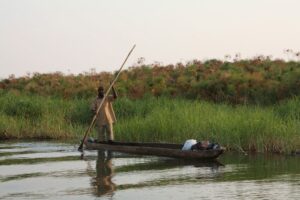
Wooden canoe on the Zambezi River
Before heading to Lusaka, our last stop was the stunning Zambezi river valley. Most travellers head to the Lower Zambezi National Park, but we did not get this far as it was just too hot – with temperatures over 40 degrees in late October. So, instead, we camped at a spot off of the M15 to Siavonga.
Hippos bathing in the Zambezi river
Looking out over the Zambezi river to the national park on the Zimbabwean side, we saw loads of wildlife, including hippos and elephants. At night we even heard roaring lions and hyenas laughing…
Ingombe Ilede Baobab
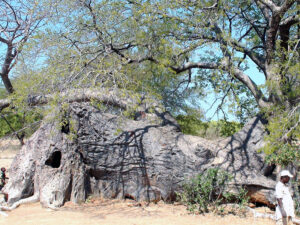
Ingombe Ilede, the Sleeping Cow Baobab
On the M15 road to Siavonga, near a small village called Lusitu (GPS Coordinates: 16°09’39.1″S 28°48’08.1″E), we stopped by to see the Ingombe Ilede, or ‘Sleeping Cow’, Baobab ($15 entrance per person). The tree is not only significant because of its bizarre shape, which resembles a sleeping animal, but also because of its historical and archaeological importance. Excavations (including human skeletons) near and inside a secret room in the tree revealed that the tree was an important trading post between the Katanga region and East Africa from the 7th to 16th centuries…



